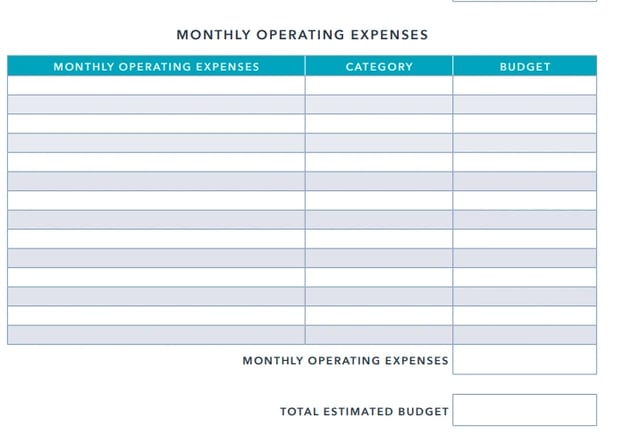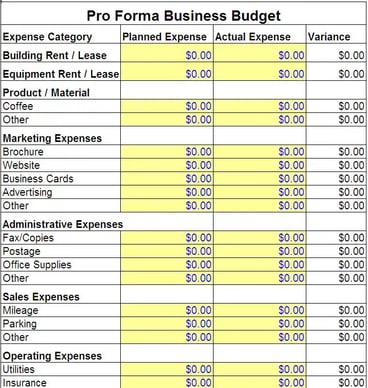What are operating expenses?
Before we get any further, let’s discuss what operating expenses are and why you need to not only know about them but care about them as well.
You’d likely be hard-pressed to find a business that costs absolutely nothing to run. No matter what service you provide or what product you manufacture, there will be at least some financial outlay to get started and keep going.
In layman’s terms, operating expenses are the cost of doing business. While there will be many similar expenses across different industries, there will also be expenses that are unique to an individual industry, business, or even product.
Perhaps you run a personal chef business where you go to customers' houses and cook them special dinners. While you may not have a storefront or factory as other businesses might, you must cover the cost of food, pots, pans, utensils, serving pieces, and other resources to cook your meals.
You’ll need a vehicle to transport you and your ingredients and cookware to jobs. You’ll probably need to advertise or, at the very least, have business cards or other marketing materials to leave behind and make word-of-mouth easier.
These operating expenses are essential to running your business, however, they will also take away from your bottom line. Consider this: It’s not about how much you make — it's about how much you keep.
Examples of Operating Expenses
You’ve now seen operating expenses in action, but what if you don’t run a home chef business? Let’s review some of the different categories you may encounter. Some potential operating expenses examples are:
- Rent
- Utilities for your brick and mortar store, office, warehouse, or manufacturing plant
- Office supplies, computers, and phone systems
- Cleaning products and tools
- Payroll for employees and payment for subcontractors
- Employee benefits and pension contributions
- Business Insurance and Licensing costs
- Manufacturing equipment
- Production materials
- Advertising and marketing costs
- Travel costs
- Commission
Now that you know what operating expenses look like, let’s take a glimpse at what isn’t considered an operating expense. These include capital expenses and non-operating expenses.
- Capital expenses are large, one-time purchases like buying a building.
- Non-operating expenses include depreciation, amortization, and interest.
You’ll need to capture all of your operating expenses in one place, but you won’t need to reinvent the wheel. There are a number of operating expense templates that you can utilize. These can be downloaded into Excel, Google Sheets, Quickbooks, or another similar program. Choose whatever tool works best for you and stick with it.
HubSpot has a simple operating expense template you can download in Excel, PDF form, or Google Sheets.


Image Source: My Excel Templates
Next, we’ll look at an easy way to calculate your operating expenses.
How to Calculate Operating Expenses
If you fall into the "fetal position" camp, hang in there for a few moments. Unfortunately, it’s not enough to know what an operating expense is. You must also understand how to calculate operating expenses.
Every operating expense you incur takes away from your available cash. Without this knowledge, you won’t have a clear picture of your company’s overall profit and you could be hemorrhaging money without knowing it. Yes, as your company grows, you’ll have a whole team of people who worry about this so you don’t have to … but you still should.
Get ready for the math. A simple formula for Operating Expenses could look like this:
Operating expenses = rent + utilities + insurance + payroll + marketing fees + vehicle expenses + equipment + office supplies
Of course, the categories yours will include will vary. If you run an accounting firm, you won’t have the same operating expenses (ingredients, refrigerator, liquor license) that a restaurant would have, so you’ll need to alter your formula to include the proper categories.
Now that you have a clear understanding of your operating expenses, what do you do with this number? Well, it can be used to determine a number of different data points including:
Operating Profit = Revenue - Cost of Goods Sold - Other Operating Expenses - Depreciation and Amortization.
Once you’ve got this number, you can figure out your operating expenses to calculate net profit and keep a pulse on how your business is performing financially.
Net Profit = Operating Profit - Taxes - Interest
How to Reduce Operating Expenses
Any smart business owner will regularly review their budget to see where costs can be lowered to raise the bottom line. However, a truly wise business owner will carefully consider the impact cutting an expense can have on their business.
Think of this as a game of chess. Every decision you make will change the course of your "game." Thinking several steps ahead will ensure that the changes you make improve your organization rather than detract from it.
For example, when the COVID-19 pandemic hit and businesses were forced to drastically reevaluate their current plans, decisions were made.
Some businesses chose to cut all "non-essential" costs like advertising and marketing. These businesses quickly realized that while these may not seem "essential," they had an immediate bearing on their ability to bring in new customers and expand.
On the other hand, some businesses realized very quickly that their employees (with good leadership, good technology, and a healthy dose of trust) could operate just fine from their homes. Instead of cutting their advertising budget, they chose to scale back in the form of giving up their brick-and-mortar offices, saving on everything from rent and utilities to water delivery and coffee creamer. Not only that, but they saved on hiring and training costs as most employees are more than happy to work from home, so turnover decreased.
There’s nothing wrong with decreasing your operating expenses. However, make sure you understand the impact your decisions will have going forward.
You have to spend money to make money. By understanding the operating expenses you will incur just by running your business, you can decide which costs are essential and which ones could be decreased or eliminated to improve your bottom line.
Paying attention to your business’s numbers doesn’t have to be frightening, but it does have to be done. This article should have provided a good foundation to help you grasp what’s happening in your business. Don’t be afraid to reach out for help in understanding your own numbers, but never hand over the reins entirely. It’s your business and you must know what’s going on.
Accounting
.png?width=112&height=112&name=Image%20Hackathon%20%E2%80%93%20Horizontal%20(59).png)






![Debt-to-Equity Ratio, Demystified [+Helpful Formulas]](https://53.fs1.hubspotusercontent-na1.net/hubfs/53/debt-to-equity-1-20250115-1477462.webp)





